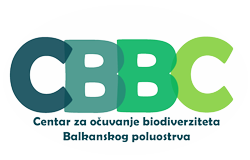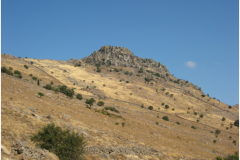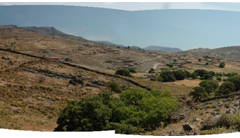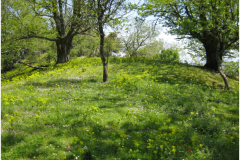The loss of biodiversity is probably one of the most important scientific problems in the 21st century. This loss does not only affect flora and fauna but also genetic diversity. The Balkan Peninsula, on the crossroads of Europe and Asia, with numerous glacial refuges, is an area rich in species and endemics of many groups of organisms. One of the widely accepted strategies of conservation biology is the preservation of biodiversity by exploration and active protection of certain areas, centres of endemism, which are rich in species. The data about the biodiversity in various groups are very heterogeneous. Vertebrate fauna is well known while invertebrates and insects in particular, are still insufficiently explored. Although vertebrates have large public interest, invertebrates are much more dependent upon the presence of microhabitats – often characterised by specific patterns of vegetation. The majority of interactions between invertebrates and plants are of critical importance for ecosystem function, since they encompass ecological processes such as pollination and herbivory. Hence, it is necessary to use them in planning conservation initiatives or for monitoring and management of habitat quality. Simultaneously, genetic diversity of endemic, rare and endangered species, based upon the identification of historically isolated lineages, provide additional information on the gene pool of the analysed target groups.
Areas proposed for protection
National Park “Fruška gora” (Serbia)
Durring the 48 years of research on hoverflies (Diptera: Syrphidae) of Fruška gora Mountain among 210 registered species, presence of many rare and endemic species was observed. Five localities were most important for conservation of these taxa: “the Roko’s brook” on Glavica, Ležimir, “the Velešić brook”, “the Maple valley” near Stari Ledinci, and “the Kulina spa”. Among those species of hoverflies there are a few which are protected taxa on the Nacional Red List. These localities were protected in 2005 as Strict Nature Reserves (Institute of Protection of Nature of Serbia http://www.natureprotection.org.yu/). This is the first example in Europe of area’s protection based on data of hoverflies diversity.
Morinj bay, Boka Kotorska (Montenegro)
Based on 18 years investigations one locality in Mediterranean in proposed for protection to Institute of Nature Protection of Montenegro. On this very small area (one square kilometre) with some well preserved ecosystems habited by many relict old-Mediterranean species, 132 hoverflies species were detected (from 192 species known in Mediterranean belt of the Balkan Peninsula). Four species are new for science. This is unique locality for 32 species in Montenegro. This proposal is supported by 3rd International Symposium on Syrphidae (Leiden, the Netherlands, 2005).
Education in Biodiversity management and Conservation Biology





